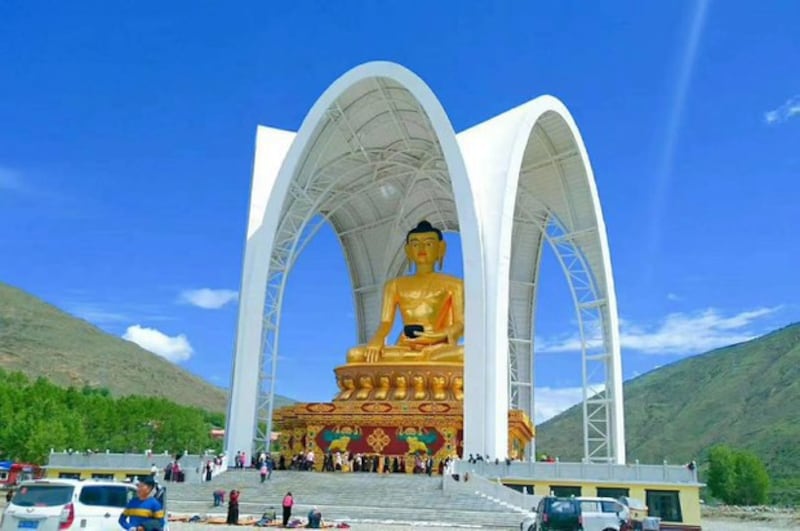Authorities in western China’s Sichuan province are beating and arresting Tibetan monks suspected of informing outside contacts about the destruction of a sacred statue, Tibetan sources say.
The 99-foot tall Buddha which stood in Drago (in Chinese, Luhuo) county in the Kardze (Ganzi) Tibetan Autonomous Region was targeted for demolition in December by officials who said the statue had been built too high.
Monks from a local monastery and other Tibetan residents were forced to witness the destruction, an action experts called part of an ongoing campaign to eradicate Tibet’s distinct national culture and religion.
Eleven monks from Drago’s Gaden Namgyal Ling monastery have now been arrested by Chinese authorities on suspicion of sending news and photos of the statue’s destruction — reported exclusively this week by RFA — to contacts outside the region, a Tibetan source in exile said on Friday.

“As of now, we have learned that Lhamo Yangkyi, Tsering Samdrup and four other Tibetans have been arrested for communicating outside Tibet,” the source said, citing contacts in Drago and speaking on condition of anonymity for security reasons.
“And a few days before the demolition of the statue began, Abbot Pelga, his assistant Nyima, and the monks Tashi Dorje and Nyima from the monastery in Drago were taken into custody, with Chinese authorities saying they needed to be taught a lesson.”
“The monks were brutally beaten and not given any food in prison, and one was beaten so brutally that one of his eyes is badly injured,” he said. “And citing what they call the indifferent attitude shown by local Tibetans, the Chinese authorities are forcing some of them to stand outside with no clothes in the freezing cold.”
Also speaking to RFA, a second source in exile said that new restrictions have now been imposed on Tibetans following the statue’s demolition, which was confirmed by RFA in Washington, D.C., using commercial satellite imagery
“Local Tibetans are not being allowed to hang prayer flags outside their doors. And their fireplaces, which are sometimes used for purification rituals, are being destroyed,” the second source said, also speaking on condition of anonymity to protect his sources.
“The Chinese police are now beating Tibetans on unreasonable excuses such as not having ‘a proper expression’ on their face. Some Tibetans have fainted, and others are being made to stand outside in the cold weather and are then released without explanation,” he said.
The U.S. State Department in a statement voiced “deep concern” at reports of the statue’s destruction.
“[We] continue to urge PRC authorities to respect the human rights of Tibetans and the preservation of Tibet’s environment as well as the unique cultural, linguistic, and religious identity of Tibetan traditions,” the State Department said.
“We will work with our partners and allies to press Beijing to cease ongoing abuses against Tibetans and return to direct dialogue with the Dalai Lama or his Tibetan representatives, without preconditions, to resolve differences.”
Sophie Richardson, China director for New York-based Human Rights Watch, added that China’s demolition of the statue and crackdown on Tibetans sharing news of its destruction show that “religious believers cannot rely on legal or constitutional safeguards of their faith.”
China in its current phase of “ultranationalist and statist ideology gives all power to the state, and regards civil society with suspicion and contempt,” Richardson said.
Translated by Tenzin Dickyi. Written in English by Richard Finney.
